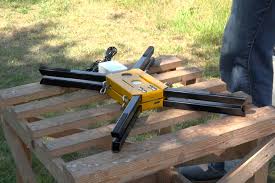
Breaking News
 Ellen DeGeneres Planning to Crawl Back to the United States After Fleeing to the UK Following...
Ellen DeGeneres Planning to Crawl Back to the United States After Fleeing to the UK Following...
 Costco Sues For Refunds Before Supreme Court Rules On Tariff Legality
Costco Sues For Refunds Before Supreme Court Rules On Tariff Legality
 America's Crime Syndicate Government: Profiteering, Protection Rackets & a Pay-to-Play Presidenc
America's Crime Syndicate Government: Profiteering, Protection Rackets & a Pay-to-Play Presidenc
Top Tech News
 Build a Greenhouse HEATER that Lasts 10-15 DAYS!
Build a Greenhouse HEATER that Lasts 10-15 DAYS!
 Look at the genius idea he came up with using this tank that nobody wanted
Look at the genius idea he came up with using this tank that nobody wanted
 Latest Comet 3I Atlas Anomolies Like the Impossible 600,000 Mile Long Sunward Tail
Latest Comet 3I Atlas Anomolies Like the Impossible 600,000 Mile Long Sunward Tail
 Tesla Just Opened Its Biggest Supercharger Station Ever--And It's Powered By Solar And Batteries
Tesla Just Opened Its Biggest Supercharger Station Ever--And It's Powered By Solar And Batteries
 Your body already knows how to regrow limbs. We just haven't figured out how to turn it on yet.
Your body already knows how to regrow limbs. We just haven't figured out how to turn it on yet.
 We've wiretapped the gut-brain hotline to decode signals driving disease
We've wiretapped the gut-brain hotline to decode signals driving disease
 3D-printable concrete alternative hardens in three days, not four weeks
3D-printable concrete alternative hardens in three days, not four weeks
 Could satellite-beaming planes and airships make SpaceX's Starlink obsolete?
Could satellite-beaming planes and airships make SpaceX's Starlink obsolete?
BEEP base keeps an eye – and an ear – on bee hives

The base itself is a weatherproof device that sits underneath an existing hive. It proceeds to continuously monitor the weight of the hive, along with its internal temperature and its bee-noise levels (the latter two are measured via hardwired sensors that run from the base and into the hive).
Every 15 minutes, the base powers itself up and wirelessly transmits its stored data for two seconds – in this way, it can reportedly run for over a year on just two AA batteries. Users receive the data via the LoRa (Long Range) protocol on their smartphone or computer, where it's displayed on an app.
The app can be set to provide alerts in the event that hive parameters change significantly. A drop in hive weight, for instance, could indicate that the colony has swarmed, the hive has fallen over, or honey production has decreased. A drop in temperature, on the other hand, may indicate that the brood cycle has been interrupted and the queen has stopped laying eggs, while a drop in noise levels indicates decreased activity overall – possibly due to disease.
Should you be interested, the BEEP base is currently the subject of a Kickstarter campaign. A pledge of €299 (about US$326) will get you a complete setup, when and if it reaches production.

 Britain Is Lost
Britain Is Lost
 First totally synthetic human brain model has been realized
First totally synthetic human brain model has been realized Mach-23 potato gun to shoot satellites into space
Mach-23 potato gun to shoot satellites into space

